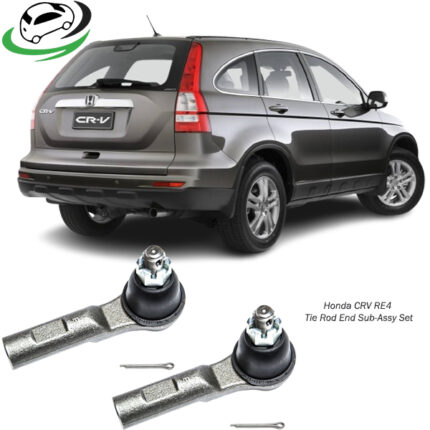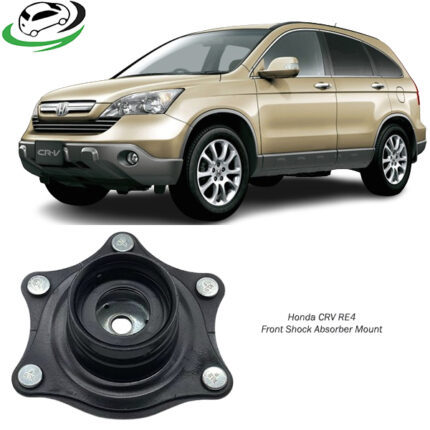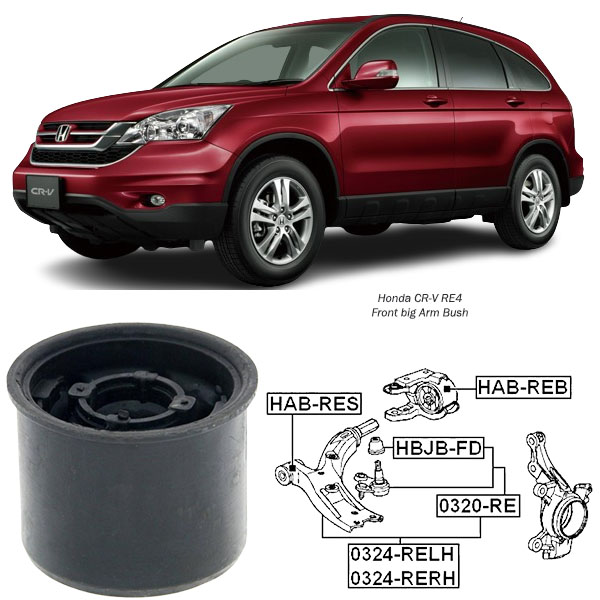-10%
Get Honda CRV RE4 Front big Arm Bush HAB-REB in Kenya
The Front Big Arm Bush, commonly known as the front control arm bushing, is a crucial component in a vehicle’s suspension system. It helps connect the control arm to the chassis and allows for smooth movement while absorbing vibrations and shocks from the road. Although small, this part plays a significant role in a vehicle’s stability, handling, and ride comfort.
Understanding the importance of front control arm bushings can help drivers maintain their vehicles efficiently, ensuring safety and comfort. This article will cover everything you need to know about the front big arm bush, including its function, types, signs of wear, and replacement procedures.
1. What Is a Front Big Arm Bush?
The Front Big Arm Bush is a rubber or polyurethane component that sits between the control arm and the chassis. It acts as a cushion to reduce metal-to-metal contact, thereby dampening vibrations and absorbing shocks from road irregularities.
1.1 Role in the Suspension System
The suspension system in a vehicle comprises several components, including springs, shock absorbers, control arms, and bushings. The front big arm bush specifically serves to:
- Reduce vibrations and noise from road impact.
- Allow smooth movement of the control arm for better handling.
- Maintain wheel alignment, preventing excessive tire wear.
- Improve ride comfort by absorbing road shocks.
1.2 Location in the Vehicle
The front control arm bushing is located at the pivot points of the control arm, connecting it to the vehicle’s chassis. It allows for slight movement while ensuring structural integrity.
2. Types of Front Arm Bushings
There are two primary materials used in manufacturing front control arm bushings: rubber and polyurethane.
2.1 Rubber Bushings
- OEM-Preferred: Most manufacturers use rubber bushings in stock vehicles.
- Vibration Absorption: They offer better cushioning, reducing vibrations effectively.
- Shorter Lifespan: Over time, rubber bushings wear out due to exposure to heat, oil, and road conditions.
2.2 Polyurethane Bushings
- More Durable: Polyurethane bushings last longer and resist oil and heat better than rubber.
- Stiffer Handling: They provide a firmer ride and improved handling, making them ideal for performance vehicles.
- Less Comfort: Since they are harder than rubber, they transmit more road noise and vibration into the cabin.
3. Signs of a Worn Front Big Arm Bush
Like any other car component, the front arm bushings deteriorate over time. Here are some common symptoms of a failing or worn front big arm bush:
3.1 Unusual Noises
- Clunking or knocking sounds when driving over bumps indicate excessive play in the bushings.
- Squeaking noises might occur if the bushing is dry or cracked.
3.2 Poor Handling and Stability
- The vehicle may feel unstable, especially during turns.
- A worn-out bushing can cause excessive movement in the control arm, affecting steering precision.
3.3 Uneven Tire Wear
- Since control arm bushings help maintain proper wheel alignment, worn bushings can lead to excessive or uneven tire wear.
3.4 Excessive Vibrations
- Drivers may feel excessive vibrations in the steering wheel due to compromised suspension cushioning.
3.5 Braking Instability
- Worn bushings can cause the control arm to shift unexpectedly under braking, leading to a shaky or unsteady feeling.
4. Causes of Front Big Arm Bush Wear
Several factors contribute to the degradation of control arm bushings, including:
4.1 Regular Wear and Tear
- As vehicles accumulate miles, the constant movement and pressure on the bushings lead to gradual deterioration.
4.2 Harsh Driving Conditions
- Frequent driving on rough or unpaved roads accelerates wear due to increased stress and impact.
4.3 Exposure to Chemicals
- Oil leaks and road salt can break down rubber bushings over time.
4.4 Extreme Temperatures
- Excessive heat can cause rubber bushings to dry out and crack, while extreme cold can make them brittle.
5. Replacing a Front Big Arm Bush
When the front control arm bushing is worn, replacing it is necessary to restore vehicle stability. Below is a step-by-step guide on how to replace the front big arm bush.
5.1 Tools Required
- Wrench set
- Jack and jack stands
- Torque wrench
- Ball joint separator
- Bushing press or hydraulic press
- Lubricant (for polyurethane bushings)
5.2 Step-by-Step Replacement Process
-
Lift the Vehicle
- Use a jack to lift the car and secure it on jack stands.
- Ensure the wheels are off the ground for better access to the control arm.
-
Remove the Control Arm
- Unbolt the control arm from the chassis and ball joint.
- Use a ball joint separator to disconnect the control arm if necessary.
-
Extract the Old Bushing
- Use a hydraulic press or bushing removal tool to push out the old bushing.
- Clean the control arm housing to remove debris or rust.
-
Install the New Bushing
- Press the new bushing into place using a bushing press.
- For polyurethane bushings, apply a lubricant before installation.
-
Reinstall the Control Arm
- Bolt the control arm back onto the chassis and ball joint.
- Tighten all bolts to the manufacturer’s torque specifications.
-
Lower the Vehicle and Test Drive
- Lower the car and take it for a test drive to check for improved stability and reduced noises.
6. Maintenance Tips for Longevity
To maximize the lifespan of your front big arm bush, consider these maintenance tips:
6.1 Regular Inspections
- Check bushings during routine vehicle maintenance.
- Look for cracks, excessive play, or signs of deterioration.
6.2 Avoid Excessive Load
- Overloading the vehicle increases stress on the suspension system, leading to faster wear.
6.3 Keep Suspension Components Clean
- Clean suspension parts regularly to remove dirt, oil, and debris that could damage the bushings.
6.4 Use the Right Material
- If durability is a priority, consider upgrading to polyurethane bushings.
7. Conclusion
The Front Big Arm Bush, or front control arm bushing, plays a vital role in a vehicle’s suspension system. It ensures smooth handling, reduces vibrations, and enhances ride comfort. Over time, these bushings wear out and must be replaced to maintain optimal vehicle performance.
By understanding the function, types, symptoms of failure, and replacement process, drivers can take proactive measures to ensure their vehicle remains in top condition. Regular maintenance and inspections can help extend the life of bushings, ensuring a safer and more comfortable driving experience.
Follow us on Facebook for more parts.




Reviews
Clear filtersThere are no reviews yet.